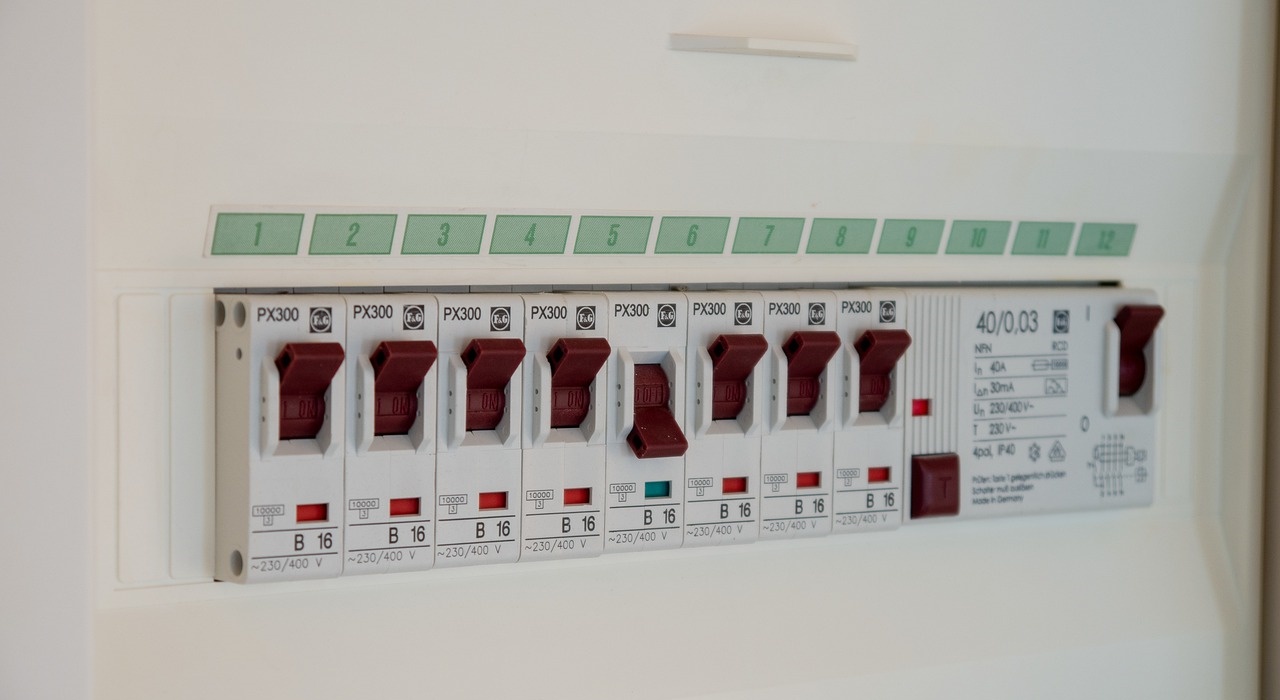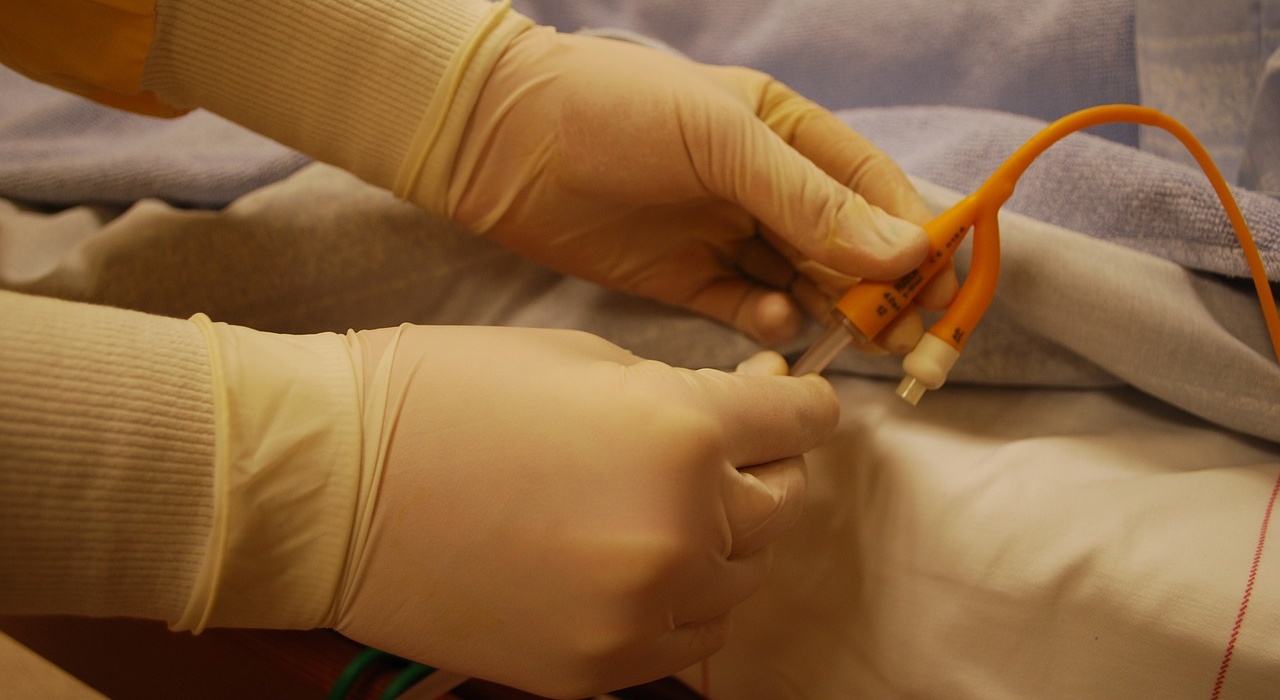2022年4月1日,CAFCはクレーム解釈が内在的記録で明確な場合にはクレーム解釈に外部証拠を考慮しないことを再確認する判決をしました (Genuine Enabling Technology v. Nintendo Co., Ltd. (Fed. Cir. April 1, 2022))。
Niazi Licensing Corp. v. St. Jude Med. S.C., No. 2021-1864 (Fed. Cir. Apr. 11, 2022), is a recent decision of the Federal Circuit considering, inter alia, the definiteness of descriptive words (or terms of degree) in a claim.
The claim at issue recited:
A double catheter, comprising:
an outer, resilient catheter having shape memory and a hook shaped distal end configured for cannulation of the coronary sinus with at least one curved bend;
an inner, pliable catheter slidably disposed in the outer catheter and of greater length than the outer catheter…
The district court found that the terms “resilient” and “pliable” rendered the claim invalid as indefinite. The Federal Circuit disagreed and reversed.
The Federal Circuit began by noting that, while terms of degree in a claim may inherently result in broader claim scope, a claim is not indefinite just because it is broad. However, terms of degree will render a claim indefinite when the intrinsic evidence (or extrinsic evidence, when relevant and available) provides insufficient guidance as to any objective boundaries for the claim – i.e., when claim scope is “purely subjective.”
With respect to the term “resilient,” the Federal Circuit found that the claim itself provided guidance with respect to the meaning of the term by requiring that the outer catheter have “shape memory.” Dependent claims further indicated exemplary materials that could be used to make the outer catheter. Likewise, the specification indicated that the outer catheter should have “sufficient shape memory to return to its original shape when un-distorted.” Although the Federal Circuit indicated that reliance on extrinsic evidence was not necessary, dictionary definitions were consistent with the claims and specification. Thus, the Federal Circuit concluded that a skilled artisan reading the claims and specification would know of exemplary materials that can be used to make a resilient outer catheter, i.e., one that has shape memory and stiffness such that it can return to its original shape.
As to “pliable,” the claim language was not as illuminating, but the specification indicated that, relative to the outer catheter, the inner catheter “is constructed of a more pliable, soft material such as silicone.” Dictionary definitions, again, were consistent with the specification. The Federal Circuit found that a skilled artisan would have understood that the inner catheter is made of a more flexible material than the outer catheter.
Thus, the Federal Circuit concluded that the intrinsic and extrinsic record provided objective boundaries by which a skilled artisan could determine the scope of the claims. The terms “resilient” and “pliable” were determined not to be “purely subjective terms,” resulting in a variable claim scope depending on the particular eye of any one observer.
Takeaway: Terms of degree in a claim can be troublesome during prosecution – an examiner can easily make a rejection, and a response proving “objective boundaries” can be difficult. However, if a term of degree cannot be deleted, the Niazi decision provides some suggestions for responding to an assertion of indefiniteness. Any indications of the scope of the term from the claims and specification can be supplemented with evidence (literature, opinion declaration, etc.) of how a skilled artisan would view the term. Although not explicitly stated in the Niazi decision, the court’s reasoning suggests that an explanation of why terms do not overlap in scope can be particularly persuasive.
Judges: Taranto, Bryson, Stoll
Last month, in Almirall, LLC v. Amneal Pharm., No. 2020-2331 (Fed. Cir. Mar. 14, 2022) the Federal Circuit affirmed the Board’s holding of obviousness in an inter partes review. In Almirall the main issue in the case was the absence, in the primary reference, of the claimed gelling agent.
Petitioner, in asserting obviousness, used a secondary reference that disclosed both the claimed gelling agent and the gelling agent of the primary reference in a “laundry list” of ten broad types, or classes, of gelling agent useful in the secondary reference. Importantly, Petitioner also included substantial expert testimony characterizing the claimed gelling agent and the gelling agent of the primary reference as being “closely related,” as capable of being “interchangeably used” in the claimed formulations “in the same concentration range,” that such a substitution was “routine and predictable,” and that one of ordinary skill in the art “would not have expected any incompatibilities.”
Patentee, unable to successfully counter this mountain of evidence, was left to argue at the margins, and focused on the non-overlapping concentration ranges of gelling agents used in the primary and secondary references. However, the Court was having none of it:
Ultimately, despite Almirall’s attempts to argue otherwise, this case does not depend on overlapping ranges. It is simply a case of substituting one known gelling agent for another. Each may be effective at a different concentration in different formulations, but that is just a property of the particular known material, subject to conventional experimentation.
Takeaway: The Almirall case is interesting because the initial “hook” that led to the finding of obviousness was one that Examiners use in rejecting claims all the time: a secondary reference with an expansive laundry list of agents that includes both the claimed agent and the agent of the primary reference. The difference between the inter partes review in Almirall and regular prosecution, however, is that during prosecution the Examiner simply alleges interchangeability based on the common listing, without more, while in Almirall Petitioner submitted substantial evidence regarding combinability, interchangeability, and expectation of success. The Almirall case thus provides applicants with a good example of the type of evidence, albeit in the reverse, to submit in traversing such rejections during prosecution.
Judges: Lourie, Chen, Cunningham
Nine times out of ten a negative limitation satisfies the written description requirement when the specification positively describes the limitation to be excluded or better yet provides a reason to exclude the limitation. The rationale for the former being that a description of the whole, necessarily describes the part remaining. For instance, when the specification discloses a composition that includes an additive selected from A, B, and C, there is support for a composition that does not include A, B, or C.
Satisfying the written description requirement without a positive recitation of the limitation to be excluded is rare; however, Ex parte Kroepke provides an example in which the Patent Trial and Appeal Board found support for a negative limitation based on silence.
The following claim on appeal is illustrative:
A cosmetic or dermatological preparation, wherein the preparation comprises from 0.01 % to 5 % by weight of at least one red light-filtering dye, at least one white pigment, and from 0.0001 % to 10 % by weight of at least one anti-inflammatory active ingredient which comprises at least one aqueous extract of Glycyrrhiza inflata, and wherein the preparation does not contain strontium cations.
Of note here is that the specification did not positively mention strontium cations, group II cations, or even alkaline earth metals. The closest disclosure of cations appears to be from ingredients in the examples such as magnesium sulphate, sodium citrate, and potassium sorbate. However, Appellant did not rely on these cation containing ingredients. Appellant simply argued that the written description requirement was satisfied because the specification included “sixty exemplified (most diverse) preparations, none of which contains strontium cations.”
The Examiner disagreed, finding Appellant’s disclosure “as a whole does not conceptualize that the preparation should or should not contain strontium cation. Further, as to the sixty examples disclosed in the application, no explicit[] disclosure of strontium cation does not mean that exemplified preparations do not contain strontium cation.”
The Board found Appellant’s position more persuasive in view of the Federal Circuit’s recent Almirall, LLC v. Amneal Pharms. LLC decision, which held:
[A] reference need not state a feature’s absence in order to disclose a negative limitation. Instead, it was reasonable for the Board to find that, in the context of Garrett, a skilled artisan would recognize that the reference discloses a complete formulation—excluding the possibility of an additional active ingredient… It is undisputed that Garrett discloses dapsone formulations that lack adapalene. The Board thus did not err in concluding that Garrett discloses the negative adapalene claim limitation.
28 F.4th 265, 273–274 (Fed. Cir. 2022) (citations omitted).
At first glance, Kroepke appears to extend the rationale from Almirall permitting the exclusion of an additional unrecited active ingredient to the exclusion of any unrecited ingredients. However, upon closer inspection, Kroepke fits the same pattern as Almirall. First, the invention in Kroepke related to “preparations that include a combination of a dye and an anti-inflammatory active ingredient, and particularly to preparations for the prophylaxis and treatment of sun-irritated skin that aid the body’s own repair mechanisms.” Second, the prior art relied upon by the Examiner in Kroepke for an obviousness rejection (which was also reversed by the Board), required the mandatory presence of strontium for its anti-irritation function when used in combinations with ingredients such as moisturizers and anti-inflammatory agents. Consequently, both Kroepke and Almirall support the exclusion of an additional active ingredient where there are exemplary and complete formulations that do not include an additional active ingredient.
Takeaway: Kroepke and Almirall illustrate a continued expansion of negative limitations satisfying the written description requirement to an extent that might not be possible in other jurisdictions. Nevertheless, it is important to keep in mind that Kroepke and Almirall fit a specific pattern in which exemplary compositions include an active ingredient, and the negative limitation relates to another active ingredient. It is unlikely that these holdings can be extended to the exclusion of any ingredient that is not recited in an example.
Notably, Appellant never had the chance to raise or argue the facts of the Almirall decision because it was decided only one month prior to the decision in Kroepke. Thus, the Board’s reliance on Almirall shows it is applying the most recent Federal Circuit precedents.
Judges: D.E. Adams, J. N. Fredman, T. Chang
2022年4月4日、CAFCは独立クレームの範囲は従属クレームに記載された態様を含むべきであるという原則を適用したクレーム解釈に基づく判決をしました (Littelfuse, Inc. v. Mersen USA EP Corp. (Fed. Cir. April 4, 2022))。
2022年2月10日、CAFCは、claim 解釈において、On sale bar の判断において,見積書であっても商業的なオファーであると解釈される場合があるとの判決をしました (Junker v. Medical Components, Inc. (Fed. Cir. Feb. 10, 2022))。
In the chemical arts, method claims can sometimes seem like an afterthought. Oftentimes presented simply to fill out a claim set, they generally play “second fiddle” to compound and composition claims, their second-class status being justified by the belief that they are more difficult to enforce. However, in many instances where the underlying agent is old, for example in second indication/new use cases, method claims play an important, even primary, role. Recently, in Univ. of Strathclyde v. Clear-Vu Lighting LLC, 2020-2243 (Fed. Cir. Nov. 4, 2021), the Federal Circuit reinforced not only the importance of method claims in such circumstances, but the importance of claiming the result of the method in such circumstances.
In Strathclyde, university researchers found that blue light of a certain wavelength could be used to inactivate methicillin-resistant Staphylococcus aureus (MRSA) bacteria, without the use of a photosensitizing agent. During prosecution, Strathclyde claimed not only the single step of their simple yet elegant method (exposing MRSA to certain light), but also the result of the method (inactivating MRSA):
1. A method for disinfecting … by inactivating … MRSA … comprising exposing the … [MRSA] to visible light without using a photosensitizer … and wherein a portion of the visible light that inactivates the … bacteria consists of wavelengths in the range 400-420 nm. . .
After issuance of the patent, Clear-Vu filed an IPR based on prior art that disclosed a series of experiments attempting to inactivate MRSA via exposure to the same blue light, both with and without photosensitizing agent, finding that the MRSA was not inactivated unless a photosensitizing agent was used. Clear-Vu argued that at least some of these experiments anticipated Strathclyde’s claims, because they exposed the same bacteria to the same light in the absence of photosensitizer.
The PTAB disagreed, finding Strathclyde’s “inactivating” claim language to be a limitation not provided by the reference. The PTAB did however find the claims unpatentable as obvious in view of a secondary reference showing that different bacteria could be inactivated using strong doses of blue light, the PTAB reasoning that it would have been obvious to increase light intensity/exposure time, etc., in experiments without photosensitizer, and that there would have been a reasonable expectation of success in inactivating MRSA by doing so.
On appeal, the Federal Circuit agreed with the PTAB’s finding of no anticipation, and did a “deep dive” into the references, finding first that neither reference showed bacteria being inactivated in the absence of photosensitizer, and second that prior art attempts at such photosensitizer-free inactivation failed. Because “the claims require that the inactivation is a result of exposing bacteria to 400–420 nm light without using a photosensitizer,” and because “failures [of prior art attempts] undermine a finding of a reasonable expectation of success” the court reversed the PTAB’s determination of obviousness and reinstated the claims.
Thus, in Strathclyde we see the importance of specifying the result of a method in the claim itself as an unavoidable limitation. Here, it preserved patentability whereas simply setting out the method’s single step (exposing MRSA to blue light), without more, would have provided a very different result. While including the result of a method may not always be necessary in an independent claim (for example in a claim with multiple or complicated steps) it is always good practice to have at least a dependent claim present specifying the method’s result should it become necessary during licensing or enforcement, or in an after-issuance challenge, to preserve validity.
Judges: Reyna, Clevenger, Stoll
AstraZeneca AB v. Mylan Pharm., 2021-1729 (Fed. Cir. Dec. 8, 2021), is a recent decision of the Federal Circuit interpreting the scope of a numerical limitation in a claim.
The claims on appeal in AstraZeneca were directed to pharmaceutical formulations for administration via pressurized metered dose inhalers. The formulations required a formulation stabilizer, PVP K25, and recited “the PVP K25 is present at a concentration of 0.001% w/w.”
The district court interpreted 0.001% w/w as encompassing 0.001% w/w “within one significant figure” – i.e., any value that could be rounded up or down to 0.001% w/w, or 0.0005% to 0.0014% w/w. The Federal Circuit disagreed and interpreted 0.001% w/w as “that precise number, with only minor variations” – i.e., 0.00095% to 0.00104% w/w. A further alternative was offered in Judge Taranto’s dissent.

The Federal Circuit indicated that, in the abstract, the ordinary meaning of 0.001% w/w was consistent with the district court’s interpretation of 0.0005% to 0.0014% w/w (“This is a standard scientific convention, and numbers falling within that range would typically be rounded up or down to 0.001%.”). However, the Federal Circuit found that
…taken as a whole, the intrinsic record supports a narrower construction of 0.001% to reflect that term’s application to the PVP concentration in particular, and the testing evidence in the written description and prosecution history showing that very minor differences in the concentration of PVP—down to the ten thousandth of a percentage (fourth decimal place)—impact stability.
Of particular importance to the Federal Circuit were experimental results in the specification showing significant changes in stability between a composition including 0.001% w/w PVP and a composition including the more precisely defined 0.0005% w/w PVP. The patentee made arguments about the results during prosecution and cancelled claims reciting, e.g., “0.0001% to 0.001% w/w” PVP and “0.0001%, 0.0005%, or 0.001% w/w” PVP. The Federal Circuit further noted that the patentee could have used the term “about” to modify of 0.001% w/w but chose not to.
Based on the Federal Circuit’s construction, the case was remanded for further consideration of infringement.
In his dissent, Judge Taranto found the majority’s approach too exacting. He argued that the disclosure of more precise values in the specification (e.g., 0.0005% w/w PVP) was not a disclaimer of the ordinary meaning of 0.001% w/w PVP. In Judge Taranto’s view, applicant’s arguments during prosecution with respect to stability at most required an exclusion of 0.0005% w/w PVP from the literal scope of 0.001% w/w.
Takeaway: This decision – particularly when the majority and dissent opinions are compared – does not offer much clarity as to how precisely a numerical value in a claim will be interpreted. There appears to be consensus that the starting point is “within one significant figure.” However, based on the majority’s decision, even the mention of more precise values in the specification or prosecution history can impute an additional significant figure to a claimed value. Practitioners should at least be wary of the risks of using different degrees of precision for different data points/values in the specification and claims and consider explicitly defining the degree of error intended for claimed values in the specification.
Judges: Taranto, Hughes, Stoll (Taranto dissenting)
In attempting to overcome obviousness rejections, our initial focus often centers on the differences between the cited references and the claimed invention. We do this in the hope of finding reasons that, even when the references are combined, the claimed invention would not be taught (no prima facie case). When such reasons are not present, we then generally look for a lack of motivation to combine the references which, unfortunately, has lately become more and more difficult to establish. However, in August the Federal Circuit issued a decision in Eli Lilly & Co. v. Teva Pharm. Int’l GmbH, 2020-1876 (Fed. Cir. Aug. 16, 2021) reminding us that, even where there is motivation to combine references, and even when all the claim limitations are provided by the combination, there is a third, separate requirement that must be met in order to establish a prima facie case of obviousness – a reasonable expectation of success in accomplishing what is required by the claims must also be present.
The Eli Lilly decision was one of three decisions issued on the same day in related inter partes review proceedings between Eli Lilly and Teva concerning patents related to monoclonal antibodies useful for the treatment of headaches. Importantly, in Eli Lilly the court found the claims’ preamble statements of “intentional purpose” (i.e., treating headaches) to be limiting. Then, citing Novartis Pharm. Corp. v. W.-Ward Pharm. Int’l Ltd., 923 F.3d 1051 (Fed. Cir. 2019) and summarizing the holding in that case as finding that “it was not enough for the [defendant] to have shown that a skilled artisan would have pursued the claimed method as a treatment option, but the [defendant] also had to show that the skilled artisan would have reasonably expected to achieve success in the treatment,” the Federal Circuit affirmed the PTAB’s finding that Lilly had failed to establish a reasonable expectation of success in pursuing the claimed method due to the uncertain and unpredictable nature of the underlying technology, even though the applied references taught all the limitations of the contested claims, and even though there was motivation to combine the references.
The Eli Lilly case is thus a good reminder for patent practitioners that, even in the face of what appears to be a very good prima facie case, there may be a pathway to patentability through the “no reasonable expectation of success” route, especially in unpredictable/newly developing arts.
Judges: Lourie, Bryson, O’Malley
Recently, the Federal Circuit, in SRI Int’l v. Cisco Sys., 2020-1685 (Fed. Cir. Sep. 28, 2021), clarified the confusion caused by an earlier remand to the district court, in which the Federal Circuit instructed the district court to determine whether the infringer’s conduct met the “wanton, malicious, and bad-faith behavior required for willful infringement.” The district court, surprised by this instruction (as was the patent bar), nevertheless proceeded and found the infringer’s conduct insufficient to meet this new, heightened standard.
On appeal for the second time, the case returned to the same three-member panel of the Federal Circuit, which clarified that it was not their intent to create a heightened requirement for willful infringement and reiterated the standard for willful infringement summarized last year in Eko Brands, LLC v. Adrian Rivera Maynez Enters., Inc., 946 F.3d 1367 (Fed. Cir. 2020): “willfulness requires a jury to find no more than deliberate or intentional infringement.” Additionally, the Federal Circuit explained that the heightened standard originally cited in remanding the case to district court was meant to refer to conduct warranting enhanced damages, available after willfulness is established.
Thus, the test for willful infringement remains as it was formulated in the U.S. Supreme Court’s 2016 decision in Halo Elecs., Inc. v. Pulse Elecs., Inc., 136 S. Ct. 1923 (2016). Importantly, the Federal Circuit in SRI Int’l. left unchanged the common defense to willful infringement: obtaining an opinion of counsel confirming that an activity or product does not infringe a patent and/or confirming that a patent is invalid and/or unenforceable.
Judges: LOURIE, O’MALLEY, STOLL










